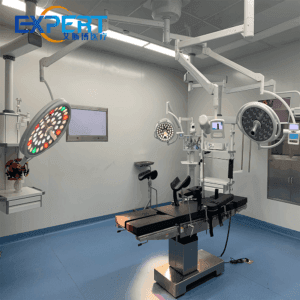Address
304 North Cardinal St.
Dorchester Center, MA 02124
Work Hours
Monday to Friday: 7AM - 7PM
Weekend: 10AM - 5PM
Address
304 North Cardinal St.
Dorchester Center, MA 02124
Work Hours
Monday to Friday: 7AM - 7PM
Weekend: 10AM - 5PM
The operating room is a theater of precision, where surgical expertise converges with advanced technology to perform intricate medical procedures. Central to this environment is the operating table—a dynamic platform that provides the foundation for surgical success. The weight capacity and stability of operating tables are engineering feats that demand meticulous design and innovation. In this article, we delve into the complex realm of weight capacity and stability in operating tables, exploring the engineering principles, materials, and technologies that ensure these tables can withstand the demands of modern surgery.

Operating tables are not just pieces of furniture; they are engineered to provide unparalleled support for both patients and surgical teams.
Engineering an operating table involves careful consideration of weight distribution and load-bearing capabilities. These factors are critical to ensure that the table remains stable and secure under the forces exerted during surgeries.
Operating tables must accommodate dynamic load factors that can vary based on the patient’s weight, surgical procedures, and positioning requirements. Engineers meticulously calculate these factors to ensure safe and reliable performance.
Stability is a cornerstone of operating table design. A stable table is essential for maintaining precise patient positioning and enabling surgeons to work with confidence.
Operating tables are engineered with a low center of gravity to enhance stability. The base design is optimized to distribute weight evenly and prevent tipping or wobbling during procedures.
Many modern operating tables are equipped with mechanical locking mechanisms that secure the table in place once it has been positioned. These mechanisms prevent accidental movement and ensure stability during surgery.
Materials used in operating table construction play a pivotal role in ensuring weight capacity and stability.
Operating tables are often constructed using high-strength alloys such as stainless steel or aluminum. These materials provide the necessary strength to support heavy loads while remaining lightweight and corrosion-resistant.
Some operating tables incorporate carbon fiber reinforcement in critical areas. Carbon fiber’s exceptional strength-to-weight ratio enhances structural integrity without adding unnecessary bulk.
Different surgical procedures demand varying levels of weight capacity and support. Operating tables must be versatile enough to accommodate a wide range of interventions.
Orthopedic procedures, which often involve positioning patients for joint replacements or bone realignment, require operating tables with higher weight capacities to ensure stability during manipulation.
Bariatric surgeries involve patients with significantly higher body weights. Specialized bariatric operating tables are engineered to support these patients safely and securely.
Advancements in technology are enhancing the weight capacity and stability of operating tables, ushering in a new era of surgical precision.
Electrically powered operating tables are equipped with advanced motors and actuators that facilitate smooth and controlled adjustments. These tables offer precise positioning and stability without the need for manual effort.
Some modern operating tables incorporate sensors and feedback systems that provide real-time data on weight distribution and table stability. Surgeons can make immediate adjustments based on this information.
Ensuring the weight capacity and stability of operating tables requires rigorous testing and certification processes.
 Operating tables undergo extensive load testing to determine their maximum weight capacity. This involves applying forces that simulate the pressures exerted during surgery to ensure the table can withstand these conditions.
Operating tables undergo extensive load testing to determine their maximum weight capacity. This involves applying forces that simulate the pressures exerted during surgery to ensure the table can withstand these conditions.
Operating tables are subject to international standards and regulations that dictate their design, performance, and safety. These standards ensure that tables meet the highest quality and safety criteria.
The weight capacity and stability of operating tables have a direct impact on the confidence of both surgeons and patients.
A stable operating table allows surgeons to focus on the procedure without concerns about patient positioning. This enhances precision and reduces the risk of unintended movement.
Patients can undergo procedures with confidence when they are assured of the table’s stability. This contributes to a positive surgical experience and enhances patient outcomes.
A1: Yes, operating tables are designed to accommodate patients of varying body sizes. Specialized supports and adjustments ensure that patients are positioned securely and comfortably.
A2: Electrically powered tables offer precise positioning and stability without the need for manual adjustments. However, the stability of both types of tables depends on their engineering, design, and weight distribution.
A3: International standards ensure that operating tables meet strict criteria for safety, stability, and performance. Compliance with these standards guarantees that tables are engineered to withstand the demands of surgery.